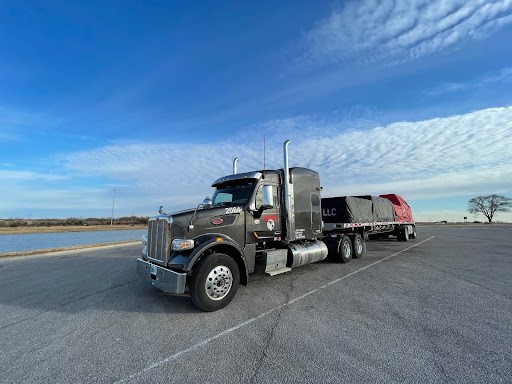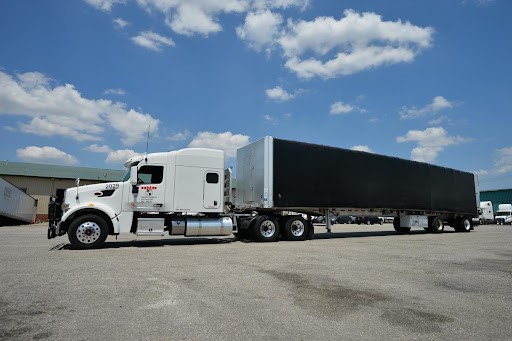Navigating the Highways and Byways: Vital Safety Tips and Advice for Rookie Truck Drivers
Every day will be like an expedition when I begin my work as a truck driver; a new frontier bearing different kinds of responsibilities and challenges. The supply chain is depended on by the truck drivers who fill out the role as a key personnel moving the economy along. While the roads are certainly easy to find and explore, the act of finding them as a beginner can be scary. Article on this site aims to arm new truck drivers with essential safety tips and advice, ensuring that their journeys are not just successful, but also safe.
Understanding Truck Dynamics Vehicle Handling
Understanding the the peculiarities of how large vehicles behave, meanwhile, is a critical tool in becoming a great driver. Another distinct characteristic about trucks as compared to passenger cars is that the former have wider blind spots and need longer braking distances and more complicated maneuvers when turning. As an example, making turns in a truck needs the awareness of vehicle’s rear rotation and predicting action of it. Rookie drivers should take time to exercise these maneuvers in the safe and controlled conditions that do not involve any road traffic until they are experienced and become fully aware of what to expect on the road.
Load Management
The way the truck will behave reveals a lot about how the cargo is loaded onto it. This shall determine the distribution of the weight. Unbalanced or secluded loads can jeopardize the driver’s safety. The shifts in stability and control can result in hazards concerning security of the vehicle. Periodic check of the load bonding is mandatary and being knowledgable with how weight evenly dispersion is very crucial when it comes to maneuvering. For instance, handling is affected during sudden turns and stops.
Maintenance Checks
You don’t have to be a mechanic to drive cars. Nevertheless, the daily maintenance checks are the first line of defense against driving problems. Crucial elements of this inspection will include tire pressure, brakes, lights, and a fluid levels. Keeping trucks in good condition and reducing the recue danger of breakdowns are some of the ways well preserved trucks ensure safety.
Mastering Road Safety

Weather Challenges
Truck drivers have to deal with weather conditions that change quickly every time, as weather can be invariable. An instance is when the road is affected by heavy rain or snow, and the following relevant actions include, slowed down driving, increased distance between vehicles, and focused real time reactions. Developing knowledge of how weather conditions can directly impact on driving, and then making road safety-related adjustments is essential thing.
Defensive Driving Techniques
Defensive driving might be considered a weapon in trucking. This also requires us to adhere to a safe following distance from other vehicles, stay alert to the ever occurring hazards on the road, and appreciate the reason why you should never rush.
For defending oneself against other drivers’ actions or possible unexpected situations, one needs to be doing lookout ahead of time and being prepared for a possible collision.
Fatigue Management
Driver fatigue is one of the stop factors that causes a lot of accidents in this area. Driving rigorously within governing rules of taking breaks, aiming for a proper rest, and keeping oneself alert for any signs of tiredness are definitely the required traits. I encourage you to always opt for safety; therefore, do not be tempted to keep driving when fatigue is takingover. It is common that you pull over to get some rest than push through.
Navigational Skills and Route Planning Efficient Route Planning
Effective route planning is more than just finding the shortest path. It involves considering traffic patterns, weather conditions, and truck restrictions on certain roads. Utilizing both GPS technology and traditional maps helps in creating efficient and safe routes.
GPS and Map Reading
While GPS is a powerful tool for navigation, understanding how to read traditional maps is an invaluable skill, especially in areas with poor signal reception or outdated GPS data. Balancing technology with traditional skills ensures continuous navigation proficiency.
Handling Unexpected Situations
On the road, the unexpected is expected. Dealing with detours, road closures, or getting lost requires calm and effective decision-making. Having a plan for such situations, including knowing who to contact for assistance, is crucial.
Communication and Professionalism Effective Communication
Good communication skills of the drivers with the dispatchers, other drivers and the emergency services personnel is undoubtedly necessary.
This facilitation of information sharing, both in times and in quality, is vital in the decision-making process and safety issues.
Professional Conduct
Even though, mastering the professionalism in truck driving will require more than smooth driving. The scope of good driving covers such aspects as following regulations, dealing with other drivers by road in a polite manner, as well as being reliable representative of the company in which you work. A professional attitude elevates safety and in general take charge of the trip.
Continuing Education
Change, as well as the ceaseless evolution, is an integral part of an industry. The same principle applies to a driver that should also develop and improve themselves. Regularly networking, both with peers and industry stakeholders, is the foundation of a safe working environment while in addition it presents new job opportunities to grow ones career.
At The End
Embarking on a career in truck driving is a journey that goes beyond just navigating roads. It’s about mastering vehicle dynamics, prioritizing safety, planning effectively, and maintaining professionalism. Remember, the learning never stops, and each mile on the road is an opportunity to grow and improve.




